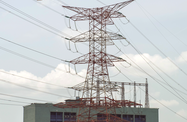Projects to expand refining capacity coupled with rising demand for downstream hydrocarbons products are attracting increased investment in Malaysia’s petrochemicals industry, while recovering oil prices are driving increased upstream expenditure.

In late March Malaysia’s national oil and gas company, Petronas, and Saudi Aramco announced the creation of two joint ventures for the Refinery and Petrochemicals Integrated Development (RAPID) project in Johor. This came a month after the two companies concluded negotiations regarding Saudi Aramco’s $7bn investment in the project.
This represents the largest offshore investment ever made by Saudi Aramco and is the largest-ever foreign direct investment (FDI) in Malaysia, according to government officials.
Saudi Aramco and Petronas conclude RAPID negotiations
The collaboration will give the two companies equal participation in and ownership of the RAPID project, which consists of a refinery with the capacity to process 300,000 barrels of crude oil per day, and six petrochemicals plants with a combined annual output of more than 3.5m tonnes.
Saudi Aramco will supply 50-70% of the crude feedstock for the refinery, while Petronas will provide natural gas, power and other utilities.
The refinery, which will produce products including petrol and diesel that will meet Euro 5 fuel specifications, is expected to come on-line at the start of 2019, followed by the petrochemicals plants towards the end of that year.
In addition to the Saudi oil giant, the downstream expansion has captured the attention of another international player. In late February SK Group announced it had begun talks with Petronas about potentially investing in the RAPID project, as well as a possible partnership in petrochemicals and renewable energy projects.
SK Group is South Korea’s second-largest conglomerate by market capitalisation and already has a presence in the Malaysian energy market, partnering with Petronas on oil and gas imports.
Investment levels exceed 2017 target
International downstream interest has been fuelled by rising internal and external demand for petroleum products, coupled with Malaysia’s efforts to expand its refining capabilities to position itself as a regional hub for major oil and gas services and equipment (OGSE) companies.
The country, which already fulfils most demand for refined products domestically, aims to double its production capacity with the help of wider downstream development in Johor, namely the $27bn Pengerang Integrated Complex (PIC), of which the RAPID project forms part.
Alongside the RAPID refinery and plants, the 6242-ha PIC will feature associated facilities including a 1220-MW cogeneration plant, a regasification terminal with annual capacity of 3.5m tonnes, a deepwater terminal, an air separation unit and raw water supply. The project is currently 87% complete.
The PIC is contained within the larger 22,000-ha Pengerang Integrated Petroleum Complex, the single largest investment project in the country.
With the help of such projects, last year Malaysia recorded more than RM724.5m ($187.1m) in FDI or domestic direct investment from OGSE companies, exceeding the year’s target of RM650m ($167.9m). According to a 2017 report on the progress of the National Transformation Programme, the national blueprint for achieving high-income status by 2020, this has put the sector on track to achieve its 2020 investment target of RM10bn ($2.6bn).
Petronas hikes capital expenditure in upstream activities
Petronas is also placing a greater focus on upstream investment this year, announcing in early March that it would increase capital expenditure by almost 24% to RM55bn ($13.2bn) in order to pursue its long-term growth strategy.
At an earnings briefing in March, Wan Zulkiflee Wan Ariffin, president and CEO of Petronas, said upstream investment will in part focus on expanding its resource base in geographically strategic regions, including ASEAN, the Indian sub-continent, the Middle East and the US.
It will be the first time in three years that Petronas has hiked capital expenditure outlays, a reflection of the improved operational environment resulting from production controls and rising oil prices.
Nevertheless, the projected spending for 2018 is well short of that of 2015, when Petronas allocated RM48.7bn ($11.7bn) for upstream activities. The more measured approach aims to avoid putting excessive pressure on supply and development chains, keeping prices in check.


